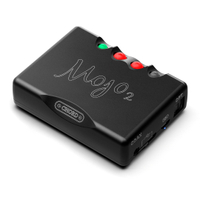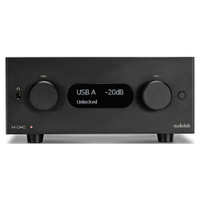What Hi-Fi? Verdict
Cambridge’s top-of-the-line DAC is a well-armed, high-performing all-rounder
Pros
- +
Smooth, clean, insightful sound
- +
Generous connectivity
- +
Native MQA support
Cons
- -
No remote control
- -
Tough competition
Why you can trust What Hi-Fi?

The DacMagic 200M was originally reviewed in October 2021 and at the time of this update (February 2025) remains a highly recommendable desktop DAC – not least as it is often available at a discount. The similarly priced pocketable Chord Mojo 2, which features in our best DACs buying guide, is a superior performer, but if you require various connectivity options and don't need your DAC to be portable, this Cambridge is the better option. You can read our original review below.
Cambridge Audio’s flagship DacMagic 200M is the DAC equivalent of an all-inclusive holiday that not only offers flights, meals and accommodation but also throws in room upgrades, free excursions and unlimited ice cream for the kids. And while we may have forgotten what holidays feel like right now, the fact that this digital-to-analogue converter is a generous soul should please anyone in the market for a well-equipped DAC for their hi-fi or desktop system.
Features & connectivity
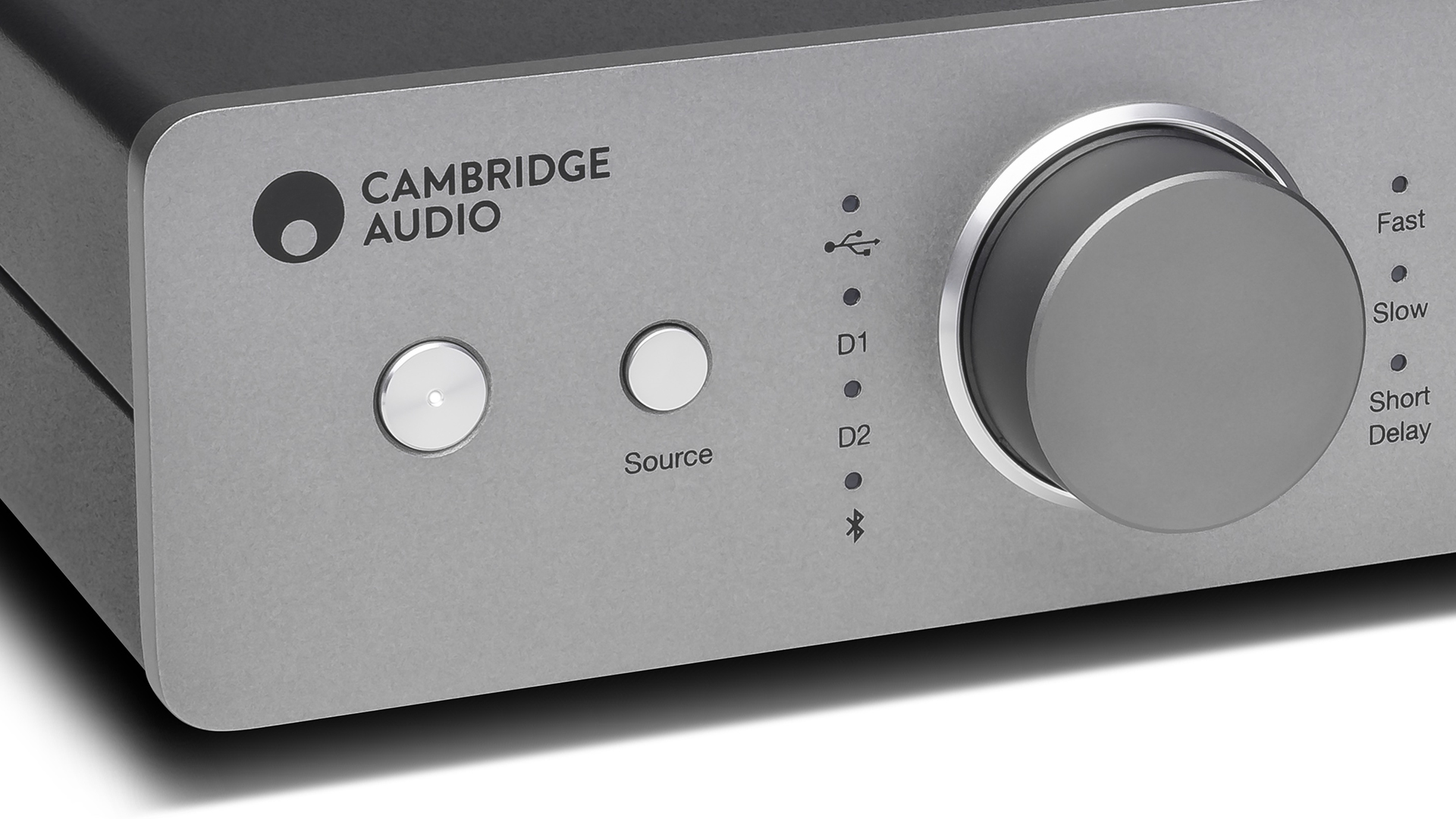
The DacMagic 200M wants to accommodate every music source and file you already own, or might conceivably think of owning. There are pairs of coaxial and optical inputs for covering CD players, games consoles and Blu-ray players, as well as a USB-type B socket (with a ground/lift switch) that welcomes laptops and PCs with open arms. For those who value easy and convenient wireless playback from a phone or tablet, aptX Bluetooth is also onboard.
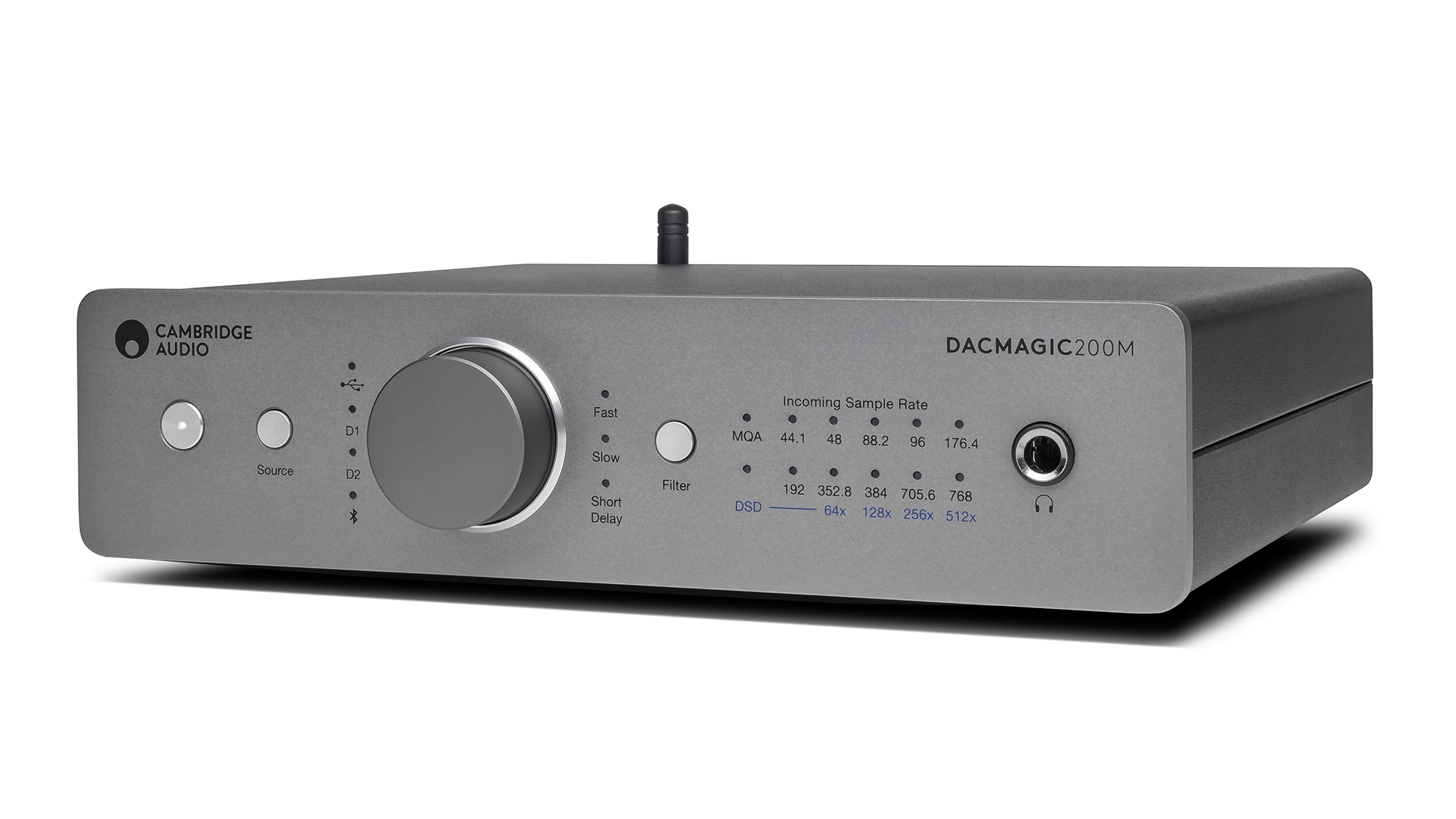
Bluetooth version aptX
Hi-res 32-bit/768kHz PCM, DSD512, MQA
Inputs USB-type B, optical (2), coaxial (2)
Outputs RCA, XLR
Dimension (hwd) 52 x 215 x 191mm
Weight 1.2kg
RCA and balanced XLR outputs on the rear panel allow the DacMagic 200M to be a middleman in a hi-fi system, while a front-panel 6.3mm output caters for listening via headphones. That’s driven by Class A/B amplification that, thanks to a reduction in output impedance, promises more power and less distortion than the one found in the previous DacMagic design.
High-resolution file support goes beyond what most people will need: the USB-type B goes up to 32-bit/768kHz and DSD512, above the bitrate of most commercially available music files, while the opticals and coaxials top out at 24-bit/96kHz and 24-bit/192kHz respectively. As off-the-shelf DAC chips become more sophisticated, hi-fi DACs increasingly sport such highbrow file compatibility.
But what makes the Cambridge stand out is its native support of MQA technology, meaning it can decode and play downloaded MQA hard files, in addition to hi-res Tidal Masters (which are MQA-encoded). That’s great news in particular for Tidal HiFi subscribers who have access to the increasing number of ‘Masters’ streams (many of which are 24-bit/96kHz) that populate the catalogue.
Build & design
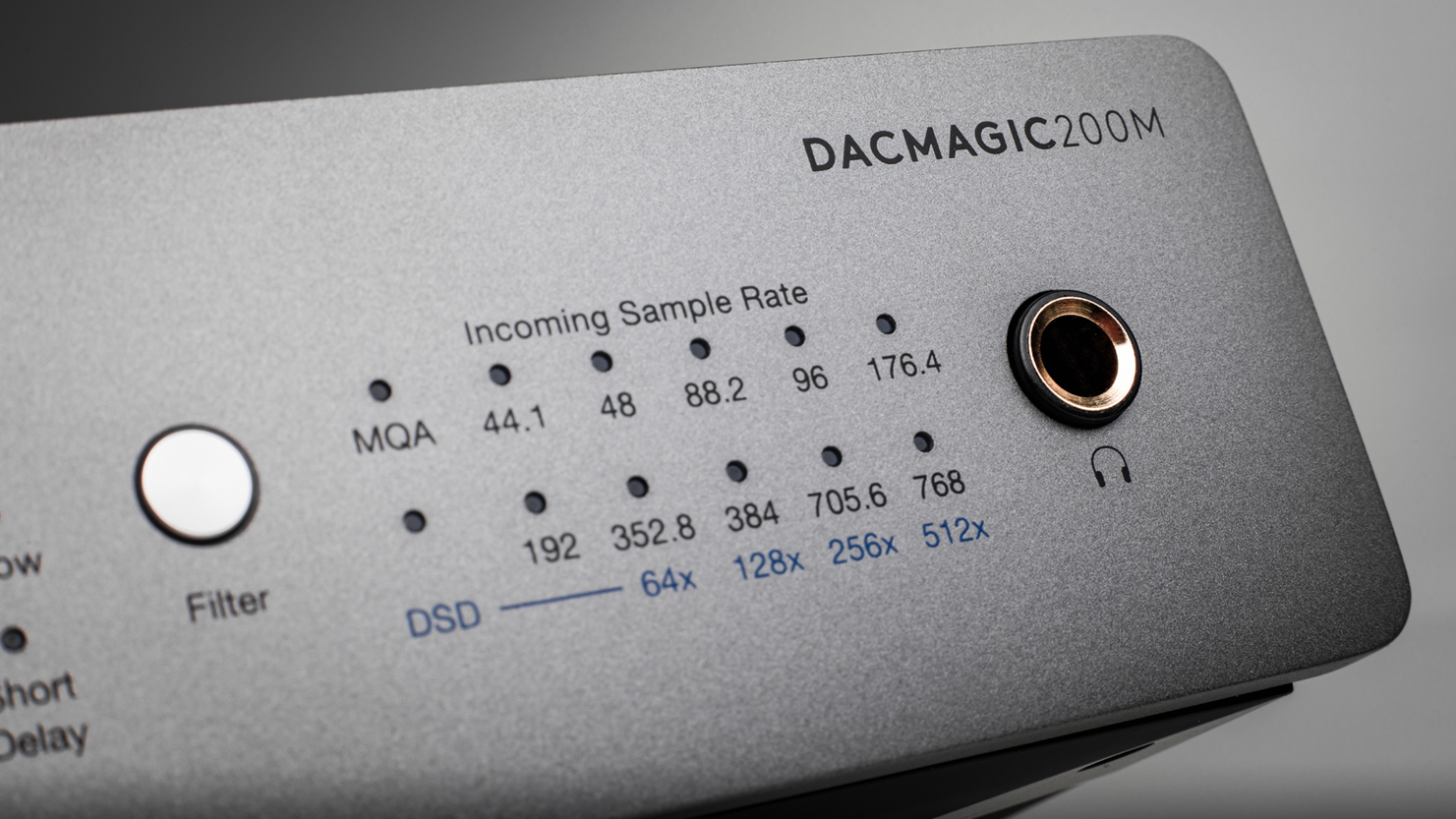
The whole right-hand side of the Cambridge’s facade is dedicated to displaying the sampling rate of the audio signal being fed into it. Several LEDs each labelled with a sampling rate – ‘44.1kHz’, ‘48kHz’, ‘96kHz’ and ‘192kHz’, for example – light up to signify it. So if you’re playing a CD-quality file, the ‘44.1kHz’ LED will illuminate. Likewise, LEDs for MQA and DSD light up when those types of files or streams are detected.
It makes for a busy aesthetic, not least as they’re also joined by LED, buttons and text labels for DAC filters and source selection, as well as the usual power button, volume dial, headphone jack and company logos. Still, it’s smartly presented and gives the DAC a rather tactile element – great if you plan to have it near you on a desktop and manually make adjustments, though not so relevant if it’s placed far away (those text labels are small) or tucked away in a system rack, as the compact aluminium chassis lends itself to. There’s no remote control either.
The DAC architecture itself uses dual ESS Sabre DACs in a mono configuration. That means one DAC chip handles the right audio channel while the other handles the left, theoretically resulting in better channel separation.
Sound quality
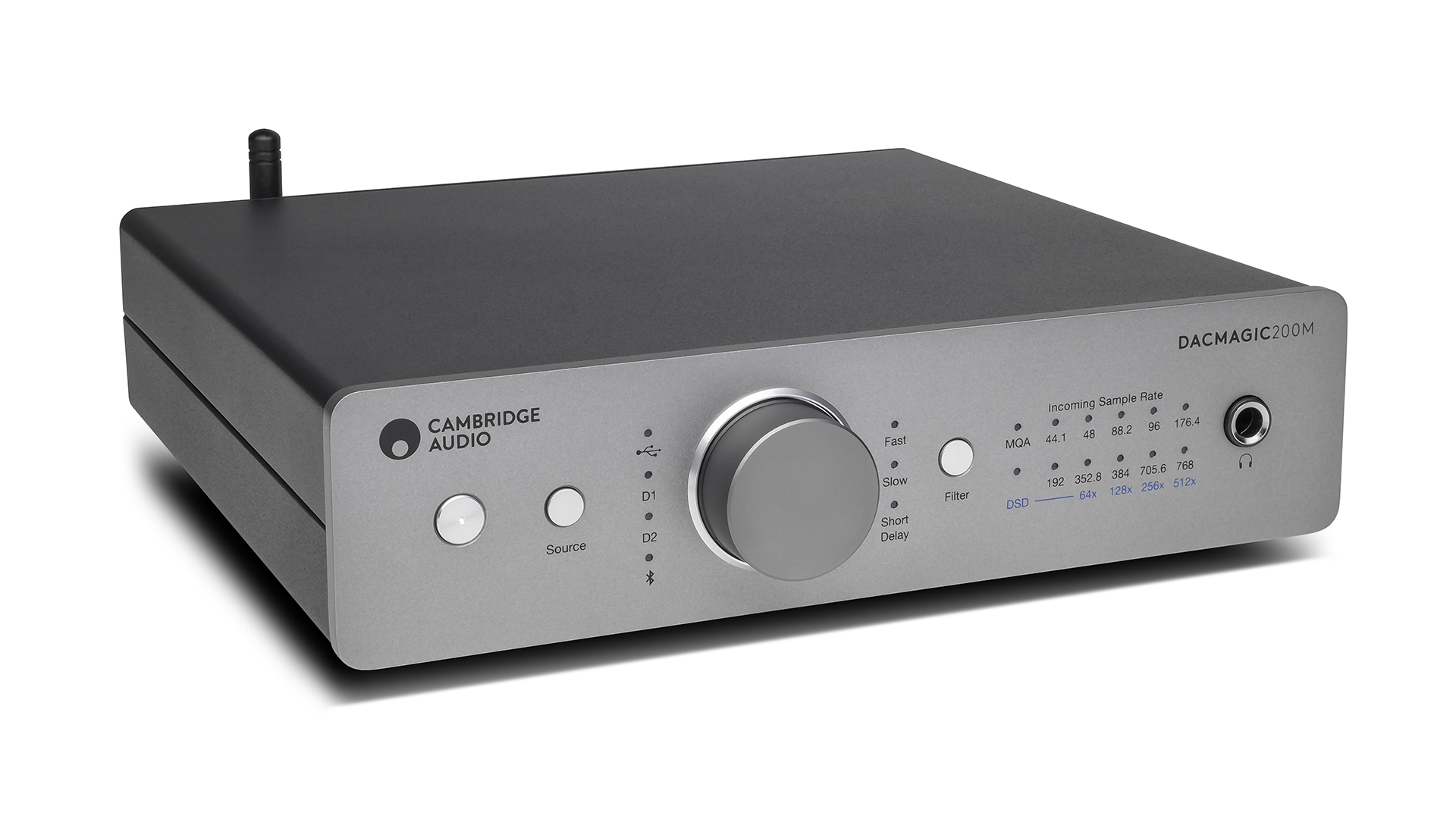
The DacMagic 200M’s performance continues the momentum of the company’s recent hi-fi components, including the CX and Edge ranges. It’s recognisably ‘Cambridge’, characterised by a full, smooth tonality that’s complemented by an open, expressive and authoritative manner.
We hook the Cambridge up to a Macbook Pro via USB type-B, feed it Arab Strap’s Fable Of The Urban Fox (16-bit/44.1kHz) and are instantly impressed by the articulacy of Aidan Moffat’s trademark poetic storytelling through the 200M. It not only communicates his unmistakable Scottish accent but also the masterful cadence of his delivery.
The insightful midrange, also exemplified by the textured acoustic melody, is bookended by a rich, punchy low-end – the introductory bass thump is full and lush – and pleasingly present highs that round off a nicely proportioned, equally talented frequency range. As the instrumentation busies the soundstage, the Cambridge has enough breadth and control to keep things coherent.
That smoothness clings to the violins leading Ólafur Arnalds’ Spiral (Sunrise Session) (24-bit/96kHz) in a way that makes it enjoyable without clouding the textural finesse or dynamic undulation of the strings that communicate the piece’s beautiful fragility. The Cambridge rides the dynamic ebbs and flows nicely, showing its grace in the quieter moments and its authority in the louder ones.
Dynamic shrewdness is backed by rhythmic coordination and punch, amounting to a musical presentation. There’s much to appreciate in a hi-fi component that lets you sit back and enjoy your music no matter the genre, whether it’s Beethoven’s Piano Concerto 5 Op73 “Emperor” Adagio (MQA, 24-bit/96kHz) or Drake’s What’s Next (24-bit/88.2kHz) – and the DacMagic 200M is one of those.
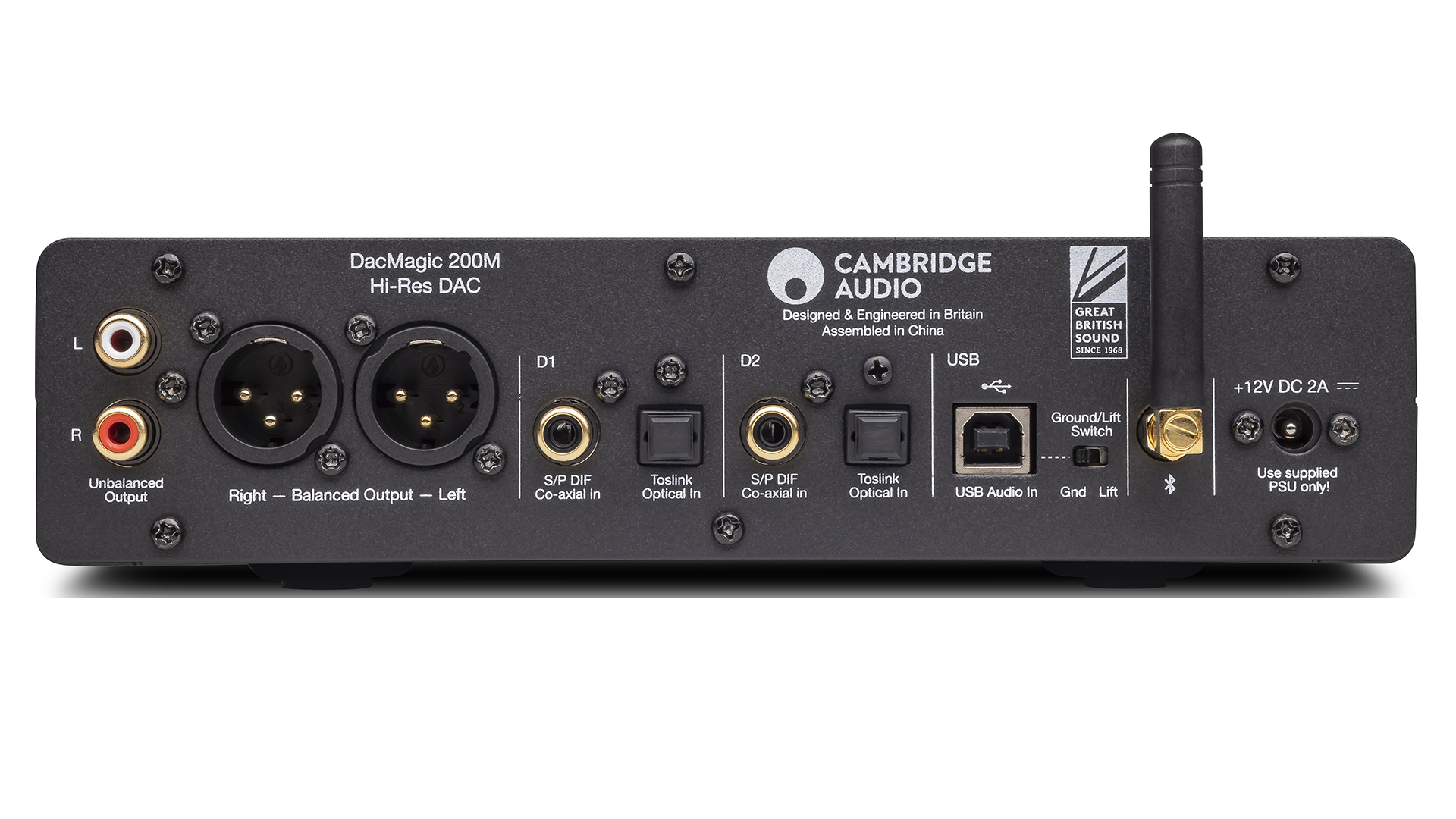
There’s enough transparency to make the most of the higher-res tracks in which it supports, too. A DSD64 of Stevie Wonder’s Too High sparkles with the amount of detail revealed.
At the other end of the scale, music transmitted over Bluetooth often equals notably muddier, more confined results compared to a wired source. But while there’s some degradation here in terms of clarity and subtlety, Bluetooth playback is exemplary when paired with a Samsung Galaxy S21 during testing. The presentation is clean, open and ultimately well upheld, which is about all you can ask for from a product of this nature.
The Cambridge’s three digital filters – Fast, Slow and Short Delay – offer fairly subtle differences, albeit some level of sonic customisation. We find ourselves settling for Short Delay – it seems the more punctual of the three in relation to timing – but it’s worth experimenting with them.
The similarly priced Chord Mojo sets a rather lofty benchmark at this price, despite lacking many of the Cambridge’s features due to its portable (and battery-powered) nature. The Chord edges ahead in performance, delivering even greater subtlety and rhythmic precision, but it can’t match the DacMagic 200M’s impressive feature versatility.
Verdict
Cambridge Audio’s latest top-of-the-line DacMagic continues the legacy of the long-standing DacMagic model, the original of which earned Cambridge its first What Hi-Fi? Award in 1996. The 200M is 25 years and several evolutionary steps along the DacMagic line in terms of features and performance, but it hasn’t lost sight of its vision to sit among the very best at its level. The DacMagic 200M is a talented all-rounder: a safe buy indeed.
First reviewed: March 2021. Review updated: February 2025.
Also Consider
Chord Mojo 2
This high-performing Chord Electronics DAC is portable, pocketable and easily the best-sounding DAC you'll find at this price, but it is quirky and doesn't sport the connections of the Cambridge Audio.
Audiolab M-DAC+
Got a bigger budget? We originally reviewed Audiolab's M-DAC+ back in 2016, but while it is now officially discontinued, you can still pick up this impressively built, well-featured and articulate-sounding desktop unit for a decent saving over its original price.
MORE:
Read our guide to the best DACs
Read our Chord Mojo review
What Hi-Fi?, founded in 1976, is the world's leading independent guide to buying and owning hi-fi and home entertainment products. Our comprehensive tests help you buy the very best for your money, with our advice sections giving you step-by-step information on how to get even more from your music and movies. Everything is tested by our dedicated team of in-house reviewers in our custom-built test rooms in London, Reading and Bath. Our coveted five-star rating and Awards are recognised all over the world as the ultimate seal of approval, so you can buy with absolute confidence.
-
Gray The review states why the headphone output has the potential to sound better.....but doesn't say whether it actually did.Reply -
Gray Reply
Another question the review leaves unanswered.muljao said:Are the outputs variable, ie is it a preamp?
We can pretty much assume it can be a preamp, but the review could (should) have confirmed it. -
muljao Reply
I'm not so sure about assuming it is. I've read a little about this because I was in the market for a preamp a little while ago. I can't find it being confirmed a preamp anywhere, even though the volume dial is mentioned. You'd imagine CA would even market it mentioning all it's functionalityGray said:Another question the review leaves unanswered.
We can pretty much assume it can be a preamp, but the review could (should) have confirmed it. -
Gray Reply
The CA specs do say that it has a 4.4V RMS output fixed or variable, user selected. So yes, as you'd expect, it can be used as a preamp.muljao said:I'm not so sure about assuming it is. I've read a little about this because I was in the market for a preamp a little while ago. I can't find it being confirmed a preamp anywhere, even though the volume dial is mentioned. You'd imagine CA would even market it mentioning all it's functionality -
Patrick dv Maybe Cambridge can consider a ‘+ version’ with Tidal and Spotify connect. Personally I think they can take a very large part of the streamer market with that (best output and no 3rd party apps)Reply -
Gray Reply
This is only a DAC though Patrick.Patrick dv said:Maybe Cambridge can consider a ‘+ version’ with Tidal and Spotify connect. Personally I think they can take a very large part of the streamer market with that (best output and no 3rd party apps)
No doubt they'd point you to their CXN or 851N streamers - which must? be able to stream Tidal and Spotify Connect?? (I wouldn't know, because I'm not interested myself). -
manicm ReplyGray said:This is only a DAC though Patrick.
No doubt they'd point you to their CXN or 851N streamers - which must? be able to stream Tidal and Spotify Connect?? (I wouldn't know, because I'm not interested myself).
They’re bound to update these with MQA compatibility as with the 200M. In fact it’s very unusual to include full MQA decoding in a standalone non-streaming DAC. Which leads me to believe the 200M is more suited to PC/laptop duty than anything else. -
Gray Reply
MQA seemed like a good idea when I first read about the principle.manicm said:They’re bound to update these with MQA compatibility as with the 200M. In fact it’s very unusual to include full MQA decoding in a standalone non-streaming DAC. Which leads me to believe the 200M is more suited to PC/laptop duty than anything else.
Doubt it's something I'll ever want / need / have though - especially if it means paying monthly subs to any streaming outfit.
